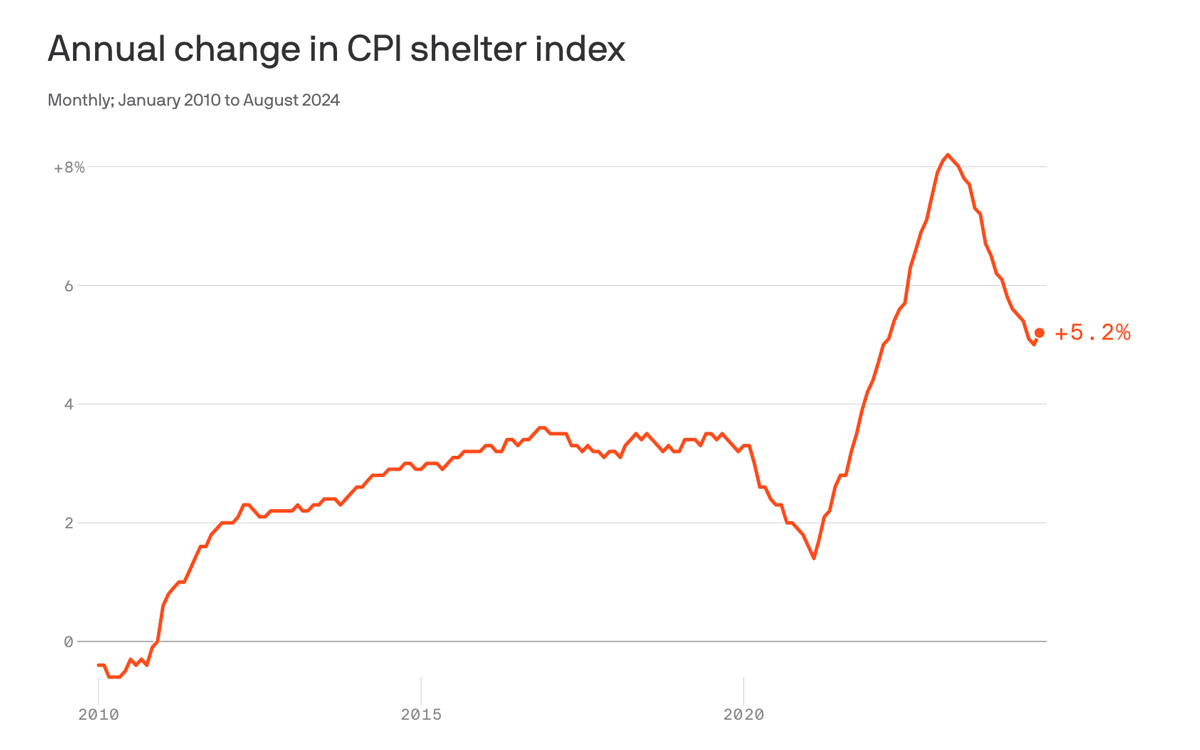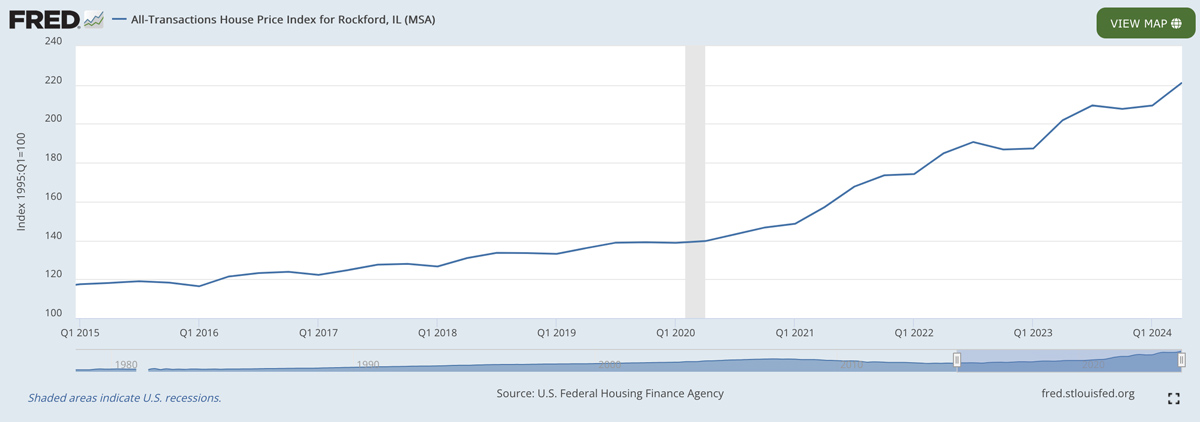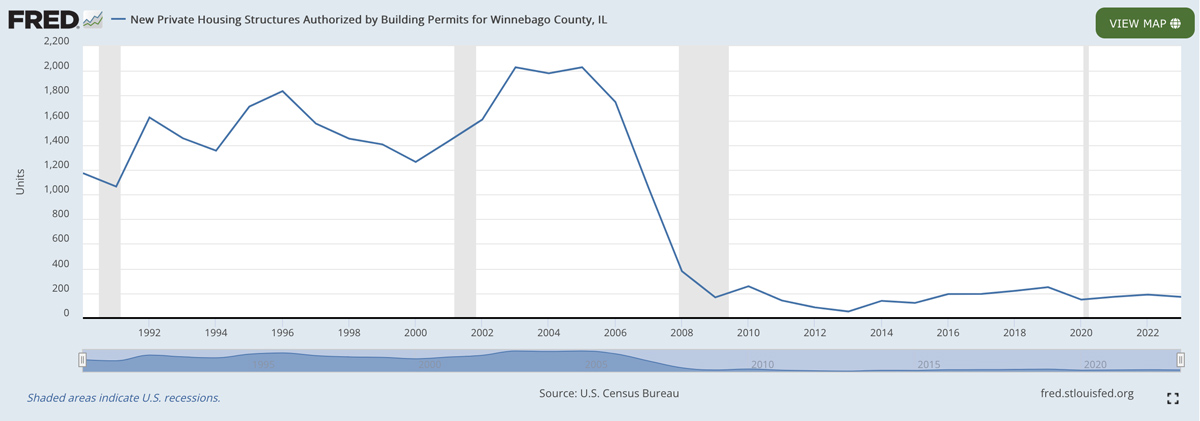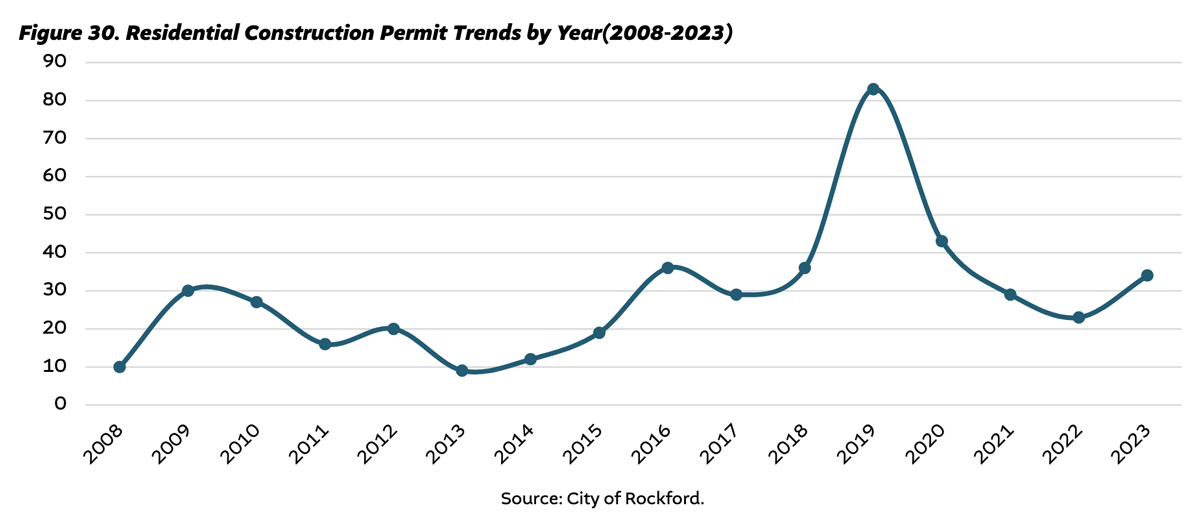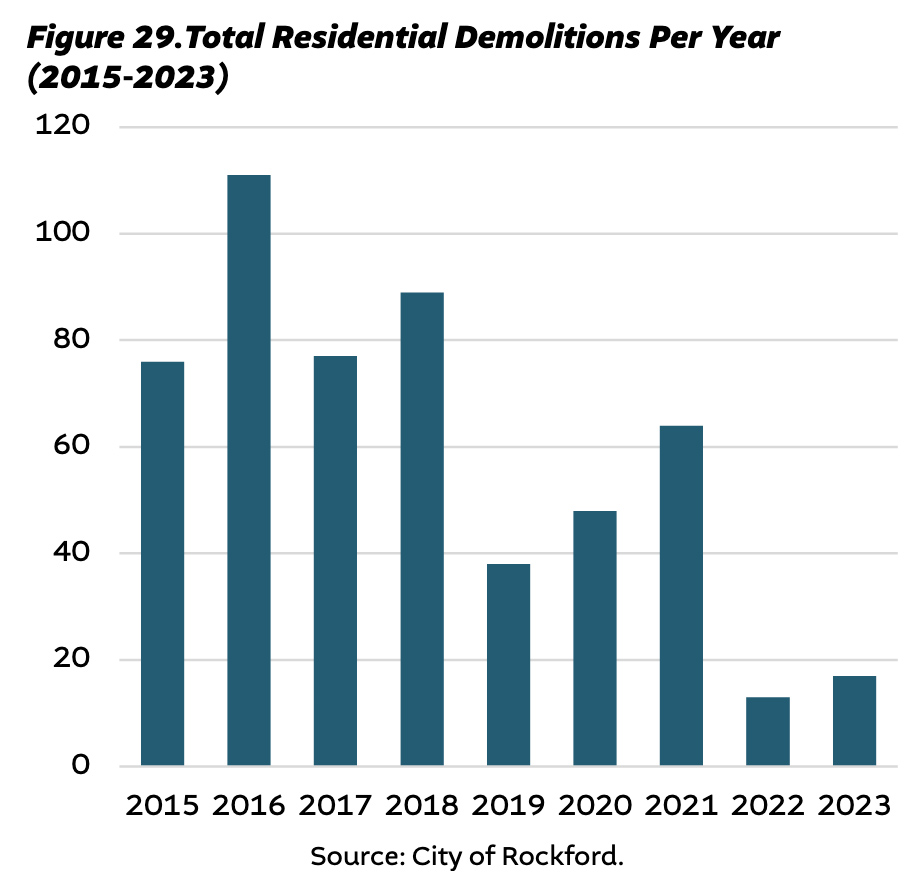The Local Housing Crisis
by Ronald Clewer
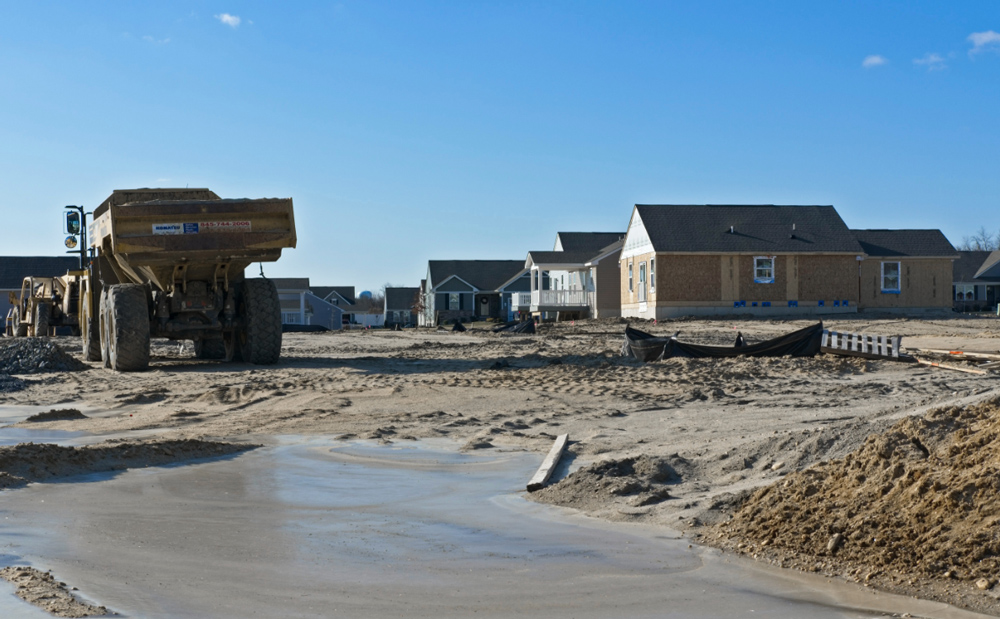
Its a Leadership Problem
Despite the recent interest rate cuts by the Fed, the cost of owning or renting shelter are among the highest in decades. The market suffers from terrifyingly low housing inventory, a trend that started after the Great Recession and has only exacerbated since our local economic conditions have improved. Resulting business growth is creating new jobs, while at the same time our comparatively affordable factors [compared to major cities] has enticed people to relocate to Rockford and work remotely.
In an October 8th, 2024, article in Affordable Housing Finance, An Election in Sight and a Housing System on the Brink, former Department of Housing and Urban Development Secretary, now Enterprise Community Partners CEO and President, Shaun Donovan stated, “…the average cost-burdened household spends $8,000 more [annually] on housing than they can afford, which is nearly the cost of a year’s supply of gas and groceries combined. That, in turn, is putting a drag on our broader economy – even with inflation cooling, housing costs are the driving force for more than 70% of core inflationary gains over the last year.” We should note cost burdened households are about 1/3 of all households and is defined as spending more than 30% of their income on rent or mortgage plus utilities.
The chart below shows the national impact of low supply and high demand for housing. This started really escalating in 2022. Had inventory been available, one could successfully argue recent inflation wouldn’t have been as painful for our nation, or for Rockfordians. Need proof? Check out my November 22, 2023, piece Can we get to YIMBY? How NIMBYism harms housing production, that showed how Minneapolis became the first city in the nation to thwart inflation via housing production.
And yet, here in Rockford, as news outlets continue to report, our housing prices continue to break new records for escalating costs.
This week I was in a community focused meeting in which we were talking about attracting new residents to Rockford. One of the participants asked about how we would address the shortfall of housing in meeting the needs of incoming residents – up to 9,000 households due to projected job growth as estimated by the City of Rockford and reported in its needs assessment. Link below. The presenter’s response remains concerning to me, but also helped me level set local leadership’s beliefs. His response was, “I believe in capitalism and that the market will take care of itself.” This from a person in a leadership role who has chosen to lead efforts to attract and grow our Rockford population. Perhaps this is the reason our collective leadership’s response to our current housing crisis has been slow in efforts to produce any housing of scale. Its proof that people don’t know that they don’t know, but I expect leadership to know about something as important as housing and its relation to growing our community. We all should.
In April, I was at a City of Rockford Council planning session where, after a thorough staff led presentation of trends and housing needs, at least one alderman chose to debate the numbers and the potential for jobs, the need for housing, and asked, “why would anyone move to Rockford?” He went on to cite crime rates and poor schools, as reasons they would not, only to retract the school statement later in his added comments. Should we really have an elected leader who fails to see his role in changing these conditions?
These and other actions have helped me conclude that some of those in charge of our future are not seeking solutions to the housing crisis around us in Rockford. With an elections season upon us, we can no longer accept weakness and ignorance in leadership and simply relying on capitalism while other communities are leading great efforts to produce housing by changing the regulations they created.
To be clear, I am not saying ALL Rockford leadership is uninvolved or uniformed. I am saying some stand as impediments to housing production and the future benefits production brings – growth of our city and tax base. We do have efforts led by city staff that seem to now be making incremental changes in permit activity.
The mayor and staff have been able to pass through council, a new construction incentive that waives permit fees, water connection costs, and abates taxes for three years. It was not without challenges and painful discussions that showed who is solutions driven and who can’t get past problems. It expires in December. Region 1 Planning Council (R1), our areas Regional Metropolitan Planning Organization reports in a recent grant case statement (page 3) this program has spurred an increase in building permits, specifically, “The program has spurred a measured increase in new residential builds. In the 12 months prior to the rebate’s adoption, single-family homes, nine two-family homes (18 units), and one multifamily structure (nine units) were built in the City of Rockford. In the 12 months after the rebate was adopted, 34 single-family homes, three two-family homes (six units), and six three-family townhomes (18 units) were built in the city.”
The City has also been able to reverse phase in language of the 2008 Zoning code amendment that added an estimated $28,000 costs to each single family home, as I wrote in the November 2, 2023 post, Reforming Land Use Regulations and Housing Production. This action could affect production on approximately 500 lots in our city. All great news but we need 1000s of units simply to replace antiquated and declining housing stock.
In my August 6, 2024, post, Have We Missed the Wave, I questioned whether we may be too late in the game to effectively address the affordable crisis. While we have certainly lost valuable time, time that has cost us housing units, it is not too for action. In fact, we MUST address the problem. This is why we voters must ask our leaders – and anyone running for office – what their plans are to boost housing production.
Concluding my thoughts on recent City of Rockford action, it seems in September (2024) we had permit activity related to 15 new construction home permits in the City as reported in the State of Illinois Data Portal which the city reports building permit activity to. I say seems because the data is difficult to discern in the report due to multiple duplications and inconsistencies in reporting protocols.
Related to these gains, I go back to my question, “Is it enough?”
The above chart shows private housing production in Winnebago county. When we look to Rockford, we see surrounding cities like Loves Park, are historically beating us in housing production. It’s in the data, and its evident when you drive past expanding subdivisions.
While I note a recent modest up tick in Rockford housing permit activity, we need to look at the housing activity over the last decade. As is evident in the two following charts, excerpted from the city 2023-2032 Housing Needs Assessment, as a city we have demolished more homes than we have built over the past ten years.
While we can point to the housing crisis as a national issue, again the control and solutions exists at our local level and some local governments are doing more than others to overcome the challenge. While not all have had the same impact as Minneapolis, many are working to rise to the impact Minneapolis has created and led.
Last week in the Newsweek October 7, 2024 opinion piece, Time To Treat the Housing Crisis Like a Crisis, authored by Justin Bibb, Spencer Cox, Andre Dickens, and Susan Thomas they note, “The housing crisis in America has been growing for decades. Our nation has careened from one crisis to another, reacting naturally but myopically instead of addressing the structural challenges facing the housing system.” Locally, we have taken the same approach. We have failed to boldly address the fundamental local regulations that increase housing prices, i.e. land use (zoning) regulations, building codes, and incentive requirements, among others. When I ask why, I hear that select council members are the impediments to progress and it’s just too hard to get them to move and approve changes. If this is the case, then this is a voter issue.
The Newsweek authors go on to state we cannot wait for the federal government to step in with solutions when many challenges are created locally and the impediments to solving local problems are often political will and local decision making. They cite communities in Utah, the City of Atlanta, and Cleveland who are, “treating the housing crisis like a true crisis.” They further go on to note efforts, “…From incentivizing the construction of starter homes in Utah; to taking a new approach to public land development with over 40 public sites underway in Atlanta; to making changes to the regulatory environment around rental and vacant properties in Cleveland; to deploying Fifth Third’s Empowering Black Futures Neighborhood Investment Program, which creates and implements innovative place-based strategies to effect positive change in nine historically disinvested neighborhoods across the Bank’s 11-state footprint,” that are making a local difference in housing production.
There are other examples of cities who’ve made gains in housing production by changing local regulations. In June of 2019, The Urban Institute article, How Communities Are Rethinking Zoning to Improve Housing Affordability and Access to Opportunity, cites communities like Minneapolis (yes again), Seattle, Austin, Santa Rose, San Diego, Buffalo, Hartford, and New Orleans, who more than 5 years ago had already made local regulatory changes to best ward off the mounting housing costs driven by a lack of supply. Simply they got that more housing was needed and it was a local problem to solve. I’m hoping I beat this drum hard and loud enough to get that message across. I’m also hoping you carry this message to your friends and neighbors.
In June this year, I wrote, Minding the Appraisal Gap – When costs exceed value as a means to help show the need for local government intervention and why capitalism alone can’t fix our current situation. Rather than simply cite the post, I am going to repost key pieces of that story to help counter beliefs that the market will indeed take care itself. I assume those who believe the market will address housing production, would agree that where costs exceed price, the capitalist/private sector will seek ways to subsidize or reduce costs and when no options exist, will simply stay out of that market. This is why there has been no real production of housing in Rockford. No business, in this case builders or developers, will create housing that loses money. Assuming we can agree on this basic capitalistic premise, I offer the following.
As the following chart shows, single family construction costs have risen significantly since we saw the last big building wave, in the late 1990s and early 2000s. Interest rates have risen as well. We are no longer in the 2%, 3%, or 4% mortgage rates and near equally as low construction loan rates, keeping in mind a developer also needs to borrow money to build a home or project. Those interest rates/costs also increase construction costs.
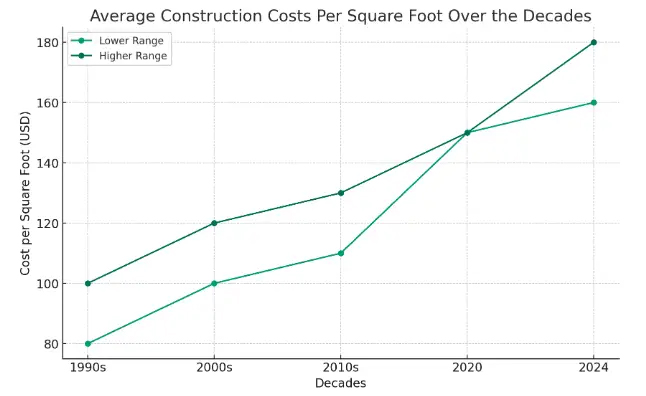
Now let’s dial in new single family housing construction costs for Rockford, IL.

Rather than repurposing the charts of sold homes from the June posting, I offer the link to show that last 8,900+ homes sold in Rockford (Zillow). I further broke sales down to those over $300,000 to show those sales at the top of our market. There were 532 sales in the list going back to 2021. The highest recent sale price was from January of this year. At $950,000, the per square foot sale price ($950,000/6258) is just under $152/per sq ft or the equivalent of our current standard grade construction cost values. I think we can all agree the house shown below is of luxury grade construction, meaning at the low end of value ($210/sq ft) if built today the house should sell for at least $1.31M – plus land, and site costs, meaning grading, landscaping, driveway, etc. This is a large gap and why we see no speculative housing production. This condition crosses all market cost segments.

Looking at this another way, if we could return to a style of housing built and sold during the height of the real estate boom in 2007, the house in the picture below sold this month for $172/sq ft, a value at the start of the premium grade construction cost per square foot. One could argue that the private market could step in and build more of these units and make a profit; however, there are some impediments. 1) the new construction cost per square foot excludes land, and site costs, meaning grading, landscaping, driveway, etc., and 2) this house is arguably “illegal” to build under the updated 2008 zoning code as at a minimum, it lacks façade appointments (i.e. brick), side windows, and has in layman’s terms “too much” garage facing the street. Changing these items to meet code add additional costs placing the new construction look alike out of a profitability zone for the capitalist to take the risk.
NOTE: I want to be clear, I am not suggesting we create poorly designed housing to spur production. I am advocating that we change our land use regulations to allow reasonableness to take root, determine a level of subsidy necessary to fill the gap, noting that subsidy can include land and other offsets, consider a return to low density multi-family like triplexes and four families, and allow them on currently zoned single-family lots, as well as other changes that more aggressive communities are adopting.
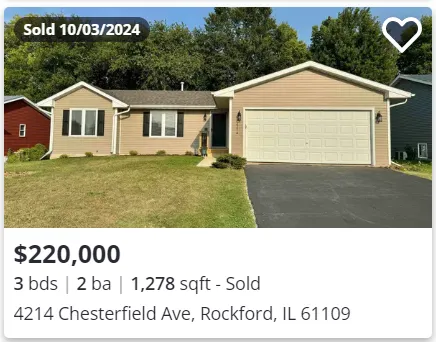
In 2023, I had a project with a local non-profit who wanted to build six new single-family homes as part of a master planned development. In addition to zoning approval, we had an informal request for “gap” subsidy to fill the remaining $30k gap per home to get the project built and sold. Several Rockford Council members stated they couldn’t support that request. We received a multitude of reasons i.e. we shouldn’t be building them at the chosen location as it was believed location was the source of the gap, or that we were targeting the wrong buyers. Educational efforts about the gap seemed to fall to deaf ears and we postponed any request for a subsidy to address this gap.
Today, the Region 1 Planning Council is working to submit an application to the United States Department of Housing and Urban Development’s Pathways to Removing Obstacles to Housing (PRO Housing) grant program aimed to expand the regional housing supply by addressing the critical appraisal gap that hinders development. They identified that gap can be as large as $90k per home. The gap exists across our region, and I applaud this effort to temporarily address the lack of production while additional meaningful land use regulations and other regulatory barriers can be addressed.
As I conclude, this brings us back to leadership. We can no longer wait for capitalism to kick in. If we do not have leadership that recognizes a lack of housing puts us at a disadvantage over nearby communities who are building homes and doesn’t allow us to grow our city and increase tax revenue, then we need different leadership. We need plans and we need action. As a voter, it would be wise to ask incumbent officials what their housing plan is and what efforts have they made to address the housing crisis to create more than a handful of units. Be sure to check their voting records on any examples they give. For new candidates, ask if they understand the breadth of the housing crisis and what their plans are to address it. Hold them accountable for meaningful answers. With the pending potential to house the up to 9,000 new households from job growth, spurring a thriving business climate, and reducing local tax obligations, we need realistic and executable solutions. We need our elected officials to do the work necessary to “pull our community up by its bootstraps.” Yes, I said what I said.


After thoughts. It should be worth noting that the home at 4214 Chesterfield that sold for $220,000 in early October, originally sold for $113,500 in 2004 when it was built, and the lot was $17,000 of that price. The cost per square foot to construct was $75.50 ($113,500-$17,000/1278) inclusive of the asphalt driveway. The deck, fence, and landscaping were added after the initial sale. The building permit shows a construction value of $47,000 or just under $37/sq ft.

